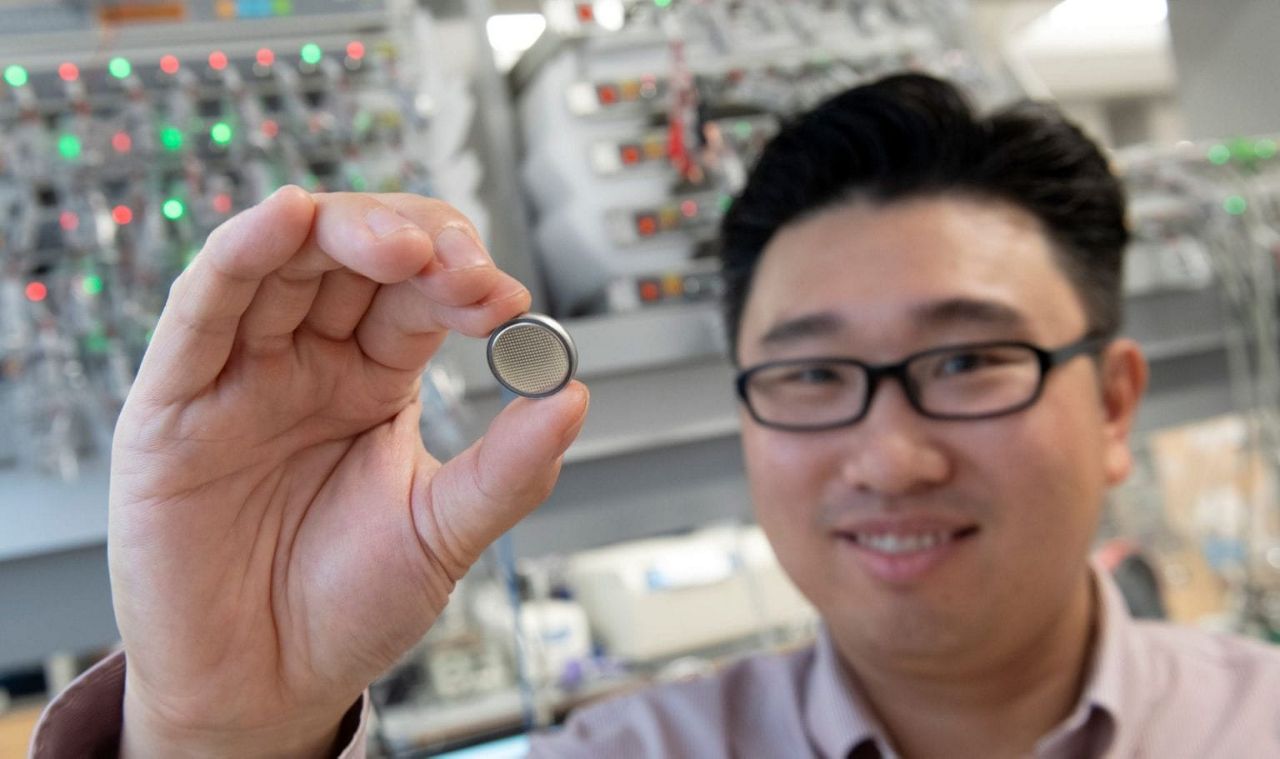Electric vehicles are becoming more common on our roads today. So efforts are underway to make the EV lithium-ion batteries inside them more sustainable.
Scientists at the University of California Irvine (UCI) developed a chemistry that creates long-lasting, cobalt-free, lithium-ion batteries.
The secret seasoning to their chemistry is nickel.
Cobalt is the stabilizing agent in most EV batteries but is expensive and singularly sourced in the Democratic Republic of Congo.
I spoke to Huolin Xin, UCI professor of physics and astronomy, to talk about how he’s making lithium-ion batteries composed of nickel viable.
The professor told me that using nickel could knock between $20 to $25 dollars off a typical EV battery.
“If we get rid of cobalt, we can lower nickel content, then the cathode will be cheaper to make,” said Professor Xin.
The element is also safer and more sustainable than cobalt.
Watch the video above to learn about the battery chemistry.
UC Irvine Professor Huolin Xin holds up a coin cell of the nickel-based EV battery. (Steve Zylius/UCI)
“[My chem material] is able to cool the cell sufficiently. This cell will not catch fire. If you use the existing material, there’s a higher chance it will catch fire. That’s the level of safety my chem material will provide,” said the professor.
His team achieved that through a process called concentrated doping. Through doping, scientists can change the chemistry of an element. It’s like changing the ingredients for a recipe.
Professor Xin compares his chemistry to baking a cookie. The cookie is already made. They are just changing the chocolate chips.
As far as the consumer benefit, the scientist says EV batteries with his chem material will give you more charge and driving performance on your EV within minutes.
“You charge your car for 12 minutes. You get 80% of this back off the range of the car. Now you charge for 5 minutes using my chem material. You can have a long-range car run for 150 miles,” Xin told me.
Nickel chemistry could change the future of the EV industry.
Xin is already having conversations with various EV automakers to scale up their design and install their batteries in the next generation of EVs.
Our team of meteorologists dives deep into the science of weather and breaks down timely weather data and information. To view more weather and climate stories, check out our weather blogs section.

